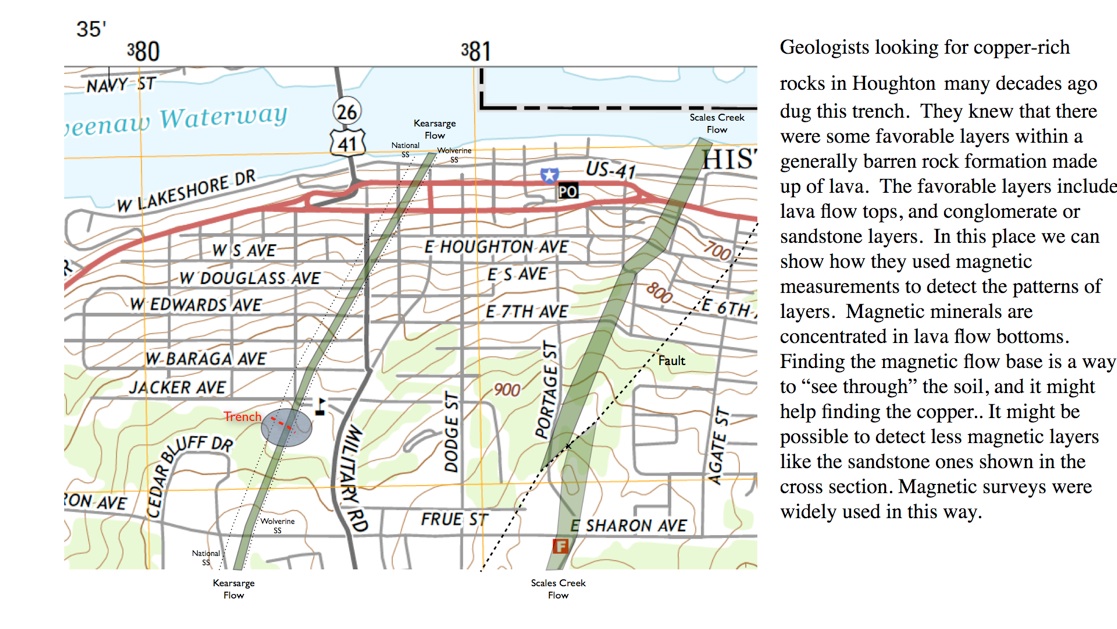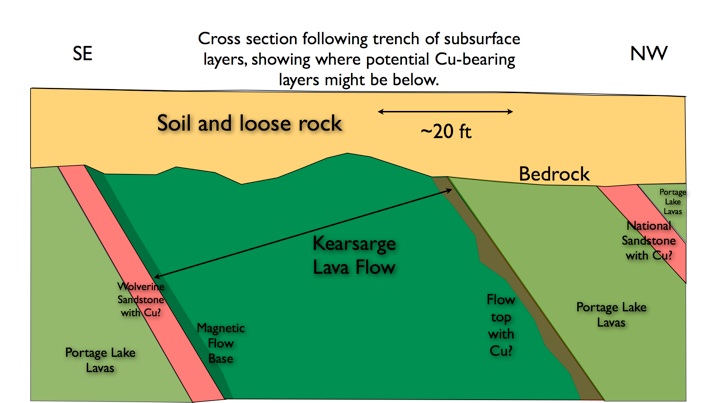Geophysics
2014

Just off to the SW of the Houghton Elementary School is an amphitheatre and an exploration trench in the woods. This is a great site to show how magnetic surveys can help to find copper and other minerals. Lava flows underlie most of the city of Houghton and these include at least two large lava flows, the Kearsarge Flow and the Scales Creek (see map below).
Geologists looking for copper-rich rocks in Houghton many decades ago dug this trench. They knew that there were some favorable layers within a generally barren rock formation made up of lava. The favorable layers include lava flow tops, and conglomerate or sandstone layers. In this place we can show how they used magnetic measurements to detect the patterns of layers. Magnetic minerals are concentrated in lava flow bottoms. Finding the magnetic flow base is a way to “see through” the soil, and it might help finding the copper.. It might be possible to detect less magnetic layers like the sandstone ones shown in the cross section. Magnetic surveys were widely used in this way.


Geophysics students from Michigan Tech using a magnetometer, looking for magnetic anomalies as part of geophysics field classes.
